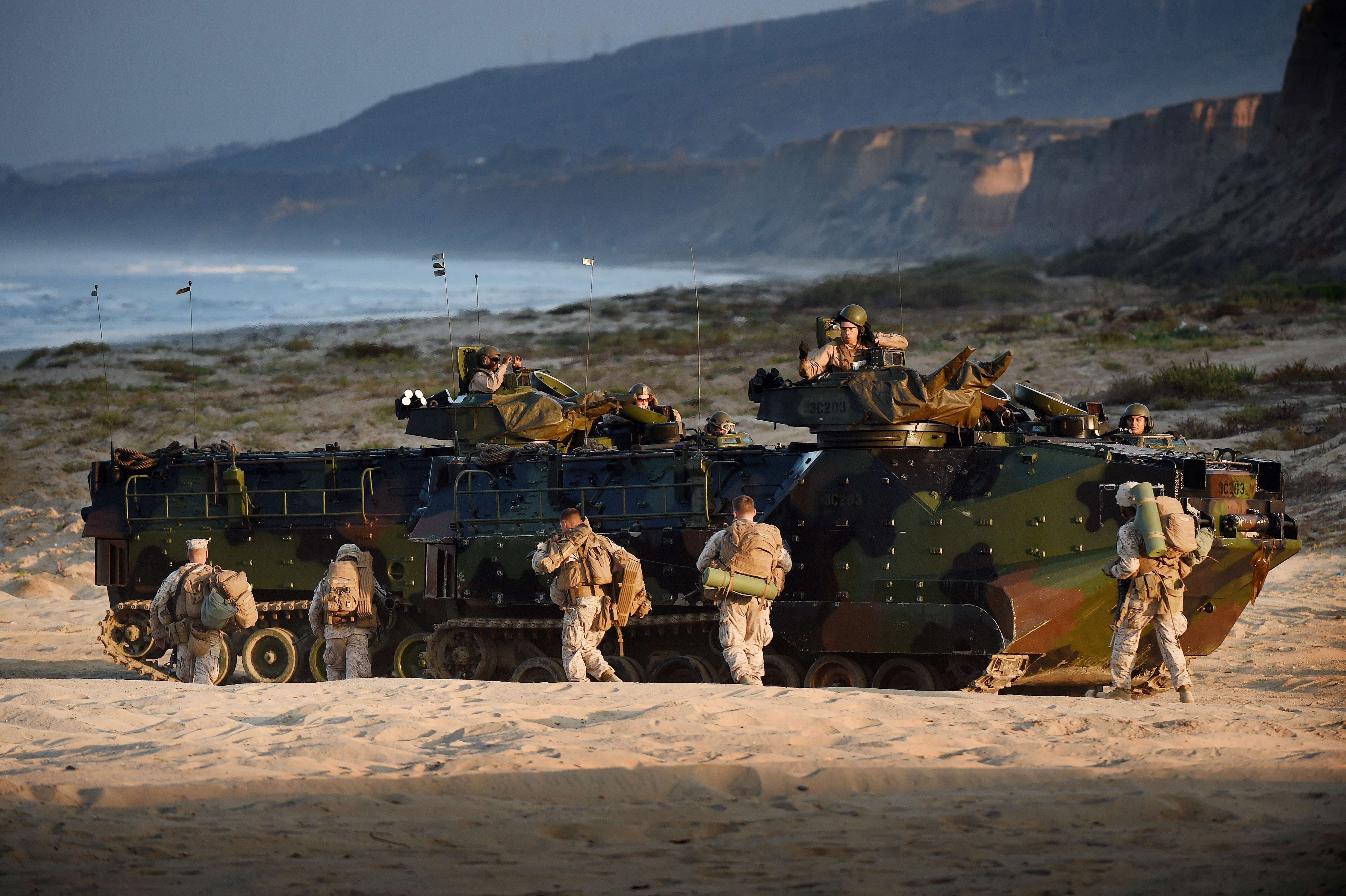A new tri-service maritime strategy for the U.S. Navy, Marine Corps and Coast Guard released Thursday is the latest Pentagon product to sound the alarm over the increasing military might of a resurgent Russia and an ascendant China.
Replete with Pentagonese like “Integrated All-Domain Naval Power,” the report starkly warns of the threat posed by Beijing and to a lesser extent Moscow, and how those rivals could upend the international order as soon as the next decade.
The report, which you can read here, warns of Beijing having the world’s largest navy and deeper shipyard capabilities, ominous portents about the future of sea control.
“To support its multilayered fleet, China is also developing the world’s largest missile force, with nuclear capabilities, which is designed to strike U.S. and allied forces in Guam and in the Far East with everything from ballistic missiles to maneuverable cruise and hypersonic missiles,” the report warns.
But while the document lays out these challenges in at-times grim terms, leaders of the three services put forth for a call with reporters Thursday struggled to explain what several points mean for rank-and-file personnel and material ship readiness.
In addition to bolstering partnerships, reassessing platforms and other measures, the report states that “ready, forward-deployed naval forces will accept calculated tactical risks and adopt a more assertive posture in our day-to-day operations.”
But what that would entail for units steaming near disputed waters in the South China Sea or flying over Europe and getting intercepted by Russian fighter jets remains unclear.
Asked by several reporters about how “calculated tactical risks” and “a more assertive posture” would play out at sea, Rear Adm. James Bynum, the acting deputy chief of naval operations for warfighting development, emphasized that the report is strategic and that providing real-world examples would amount to “conjecture.”
Marine Corps. Maj. Gen. Paul Rock, director of the strategy and plans division, plans policies and operations, said those aspects of the report are “not about being provocative.”
“It is not about sons and daughters of America being exposed to unnecessary risk, gratuitously,” Rock said.
Instead, he said, it was about “clearly signaling” to China or Russia that the United States’ naval forces will take steps to reinforce and maintain existing international standards.
“We are not going to be ‘salami sliced’ to death or back down” on upholding those norms, Rock said.
Bradley Martin, a retired surface warfare officer who spent two-thirds of his 30-year career at sea, questioned the utility of such statements in the report.
“Strategic doesn’t mean vacuous,” said Martin, now a senior policy researcher at the Rand Corp.. “Just to say we’re going to do it and leave it at that, it’s not really a helpful addition to discourse.”
RELATED

The new strategy also states that “the integrated Naval Service will carefully manage its resources to answer global force demands efficiently.”
That aspiration sharply contrasts with the current state of the Navy’s surface fleet, which has seen record-breaking cruises and looming back-to-back deployments of two aircraft carriers this year, all in peacetime, decisions that inevitably eat away at the readiness required should outright war erupt.
Asked about the disconnect between the strategy and current fleet resource management, Bynum said that while “there is a clear-eyed understanding that we must have those priorities if we are going to develop that future appropriate force,” there will also be “some prioritization decisions.”
Martin called the report’s line about carefully managing resources “a completely empty statement, frankly.”
Overworked ships and crews were factors in the two fatal ships collisions of 2017.
“It’s going to take more than just publishing this type of document to really address the type of problem that they’re talking about,” he said.
Martin said he doubted that the strategy rolled out Thursday would amount to much in terms of substantive change.
“I appreciate that the Department of the Navy and the Coast Guard want to think about the types of planning and capability they’re going to have to do,” said Martin, who likened the report “to a long string of brochures.”
“They’re not strategic documents and they don’t really drive anything,” he said. “Other than, if somebody wants to justify some capability … they’ll be able to point to that.”
Geoff is the managing editor of Military Times, but he still loves writing stories. He covered Iraq and Afghanistan extensively and was a reporter at the Chicago Tribune. He welcomes any and all kinds of tips at geoffz@militarytimes.com.




